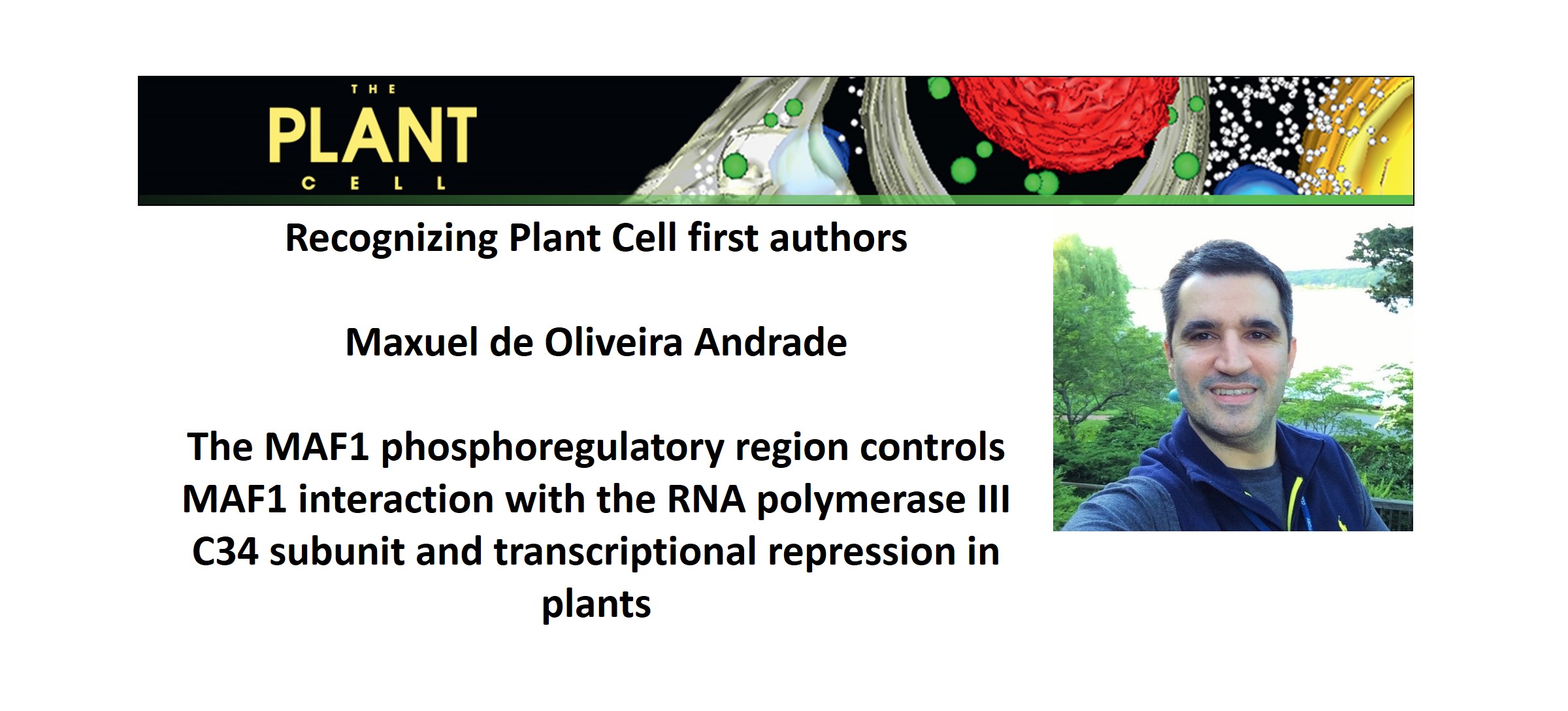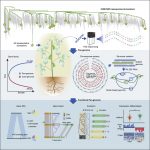Recognizing Plant Cell authors: Maxuel de Oliveira Andrade
 Maxuel de Oliveira Andrade, first author of The MAF1 phosphoregulatory region controls MAF1 interaction with the RNA polymerase III C34 subunit and transcriptional repression in plants
Maxuel de Oliveira Andrade, first author of The MAF1 phosphoregulatory region controls MAF1 interaction with the RNA polymerase III C34 subunit and transcriptional repression in plants
Current Position: Postdoctoral Research, Biochemistry, Brazilian Bioscience National Laboratory (LNBio) – CNPEM, Brazil
Education: BS from Federal University of Viçosa (UFV), Brazil; M.S. and Ph.D. from University of São Paulo (USP), Brazil; Postdoctoral Research from University of Florida (UF), USA
Non-scientific Interests: travelling, hiking, photography, music, and movies
Brief bio: As an undergraduate student at Federal University of Viçosa (UFV), I started my scientific career studying biotic and abiotic stress responses in plants under the supervision of Dr. Elizabeth Fontes. Later, I earned my M.S. and Ph.D. degrees in Biochemistry at USP, working with Dr. Chuck Farah on protein-protein interactions involved in Xanthomonas citri quorum-sensing signaling and regulation of virulence factors production. After USP, I joined the CREC at University of Florida as a postdoc at Dr. Nian Wang’s lab to study the interaction of citrus plants with pathogenic bacteria X. citri and Ca. Liberibacter asiaticus. Back in Brazil, I continue my studies on plant-pathogen interactions in Dr. Benedetti’s lab at LNBio. Here, we combined genetic, biochemical and structural data to show that the citrus RNA Pol III repressor MAF1, an interactor of the major X. citri TAL effector PthA4, specifically binds the RNA Pol III subunit C34 and that its phopho-regulatory region contributes for this interaction. We also show that the C-terminal of citrus BRF1 competes with MAF1 for C34 interaction. Thus, based on the crystal structures of citrus MAF1 and Cryo-EM structures of yeast Maf1 bound to Pol III, we propose a model in which progressive phosphorylation of MAF1 disrupts the interaction with CsC34 leading to Pol III de-repression. To our knowledge, this is the first mechanistic model to explain how the interaction of MAF1 with Pol III is regulated by phosphorylation.



